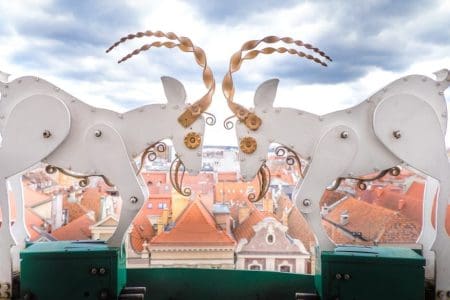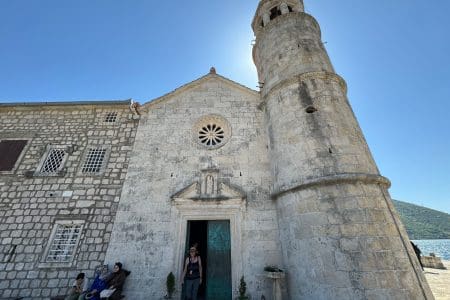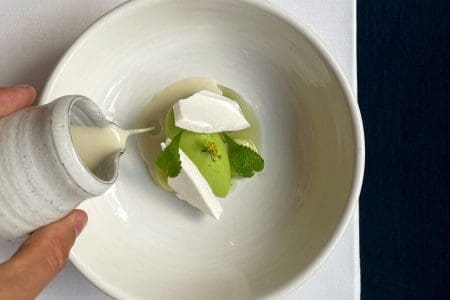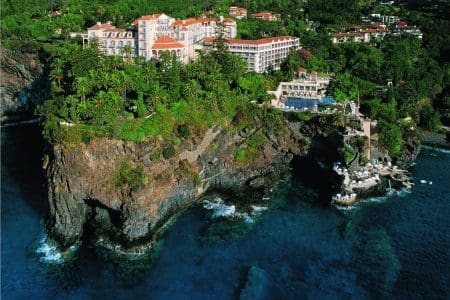“From here you can see the whole history of Berlin,” Sönke Schneidewind tells me from the terrace at the top of the Stiftung Humboldt Forum.
To my left I can see the Reichstag and the Brandenburg Gate, and even on this cloudy day the Berlin Victory Column in the distance. To my right is the Alexanderplatz Fernsehturm (Tower), and in front of me the Altes (Antiquities) Museum and the Berlin Dom (Cathedral) on Museum Island. But arguably the building on which I am standing reflects the history of the Berlin capital more than any of these other famous landmarks.
Humboldt Forum
The Humboldt Forum was built on the site of the former Berlin Palace which from 1443 until the end of the First World War was the home of the House of Hohenzollern. Frederick I of Prussia commissioned Andreas Schlüter to expand it from 1689 to 1713. The building was badly damaged in the Second World War and eventually demolished by the GDR in 1950.
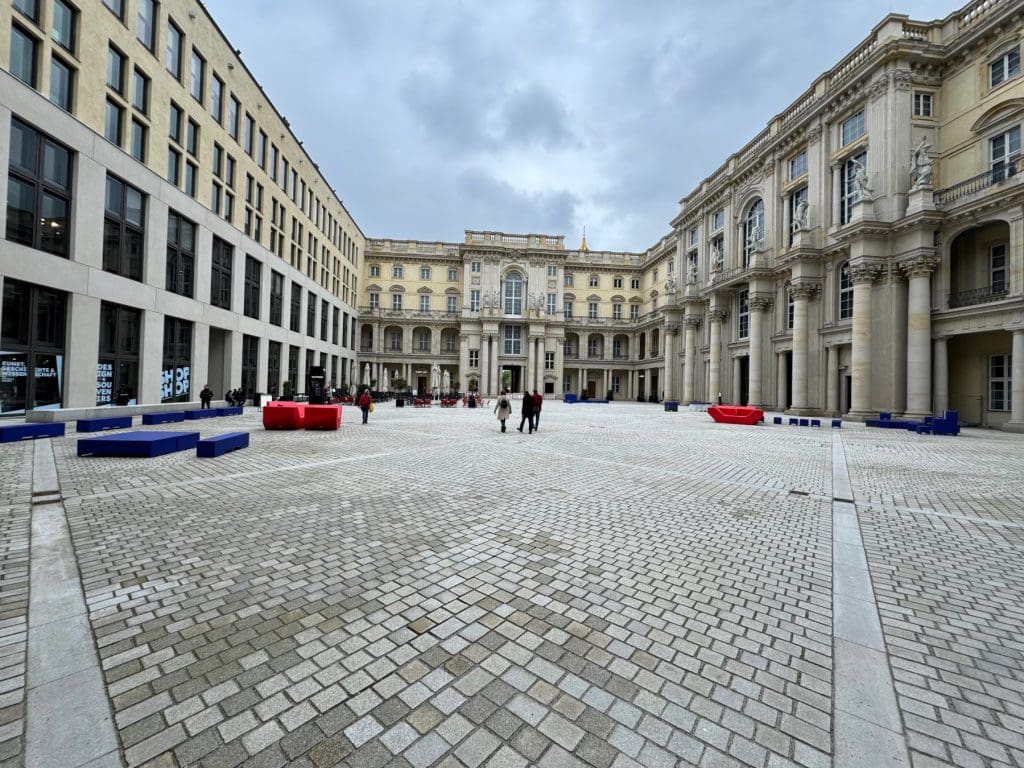
In the 70s the baroque Palace was replaced by the Palace of the Republic by the GDR. Here the GDR Parliament sat, but also there were cultural events, giving the building an unusual dual role.
Closed in 1990, it was occupied by squatters until its demolition from 2006-8. Then the site became an urban meadow until work started on the construction of the Humboldt Forum in 2013, with it officially opening to the public in 2021.
I am fortunate enough to be shown around by Sönke, but there is an interesting video depicting the history of the site – 80 years in 14 minutes, which all can see.
Sönke explains the design of the building references both the Berlin Palace and the Palace of the Republic. Upon entering one of its twin courtyards, I had felt as though I were approaching the Royal Academy in London, although one of the facades has a modern design. From the river the Forum has a modernist touch like the Kennedy Centre in Washington DC, but the side facing Museum Island is pure Baroque.
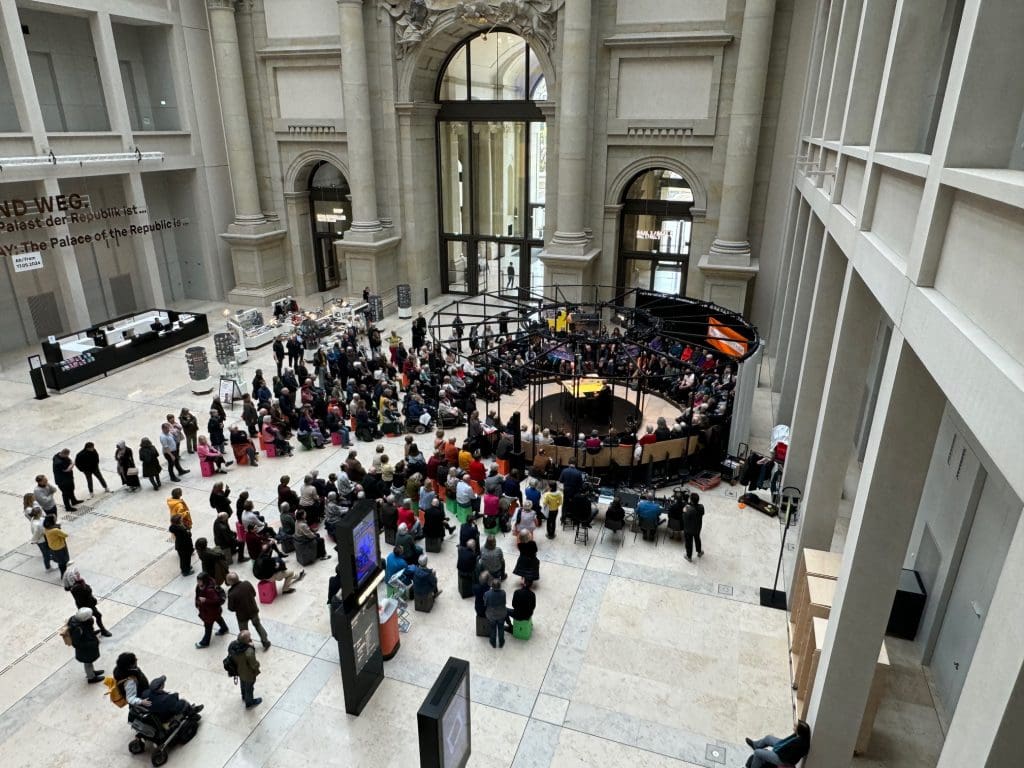
According to Sönke this mixed design represents a compromise between those people who wanted historical reconstruction and those who wanted to remember the GDR’s Palace of the Republic. For him, though it is important that the Humboldt Forum is seen as a new building not simply an echo of two very different pasts.
Named after the Humboldt brothers, who were scholars and visionaries, the Humboldt Forum is an urban space for art and culture. Of particular interest to me following my accessible travel tour to Edersee, it is totally accessible to all. On my visit I noticed several visitors in wheelchairs.
Sönke explains the intention of the Forum is to provoke debate and create dialogue rather than simply serving as a repository for artefacts such as at the Altes Museum across the square. It is where the arts and the sciences meet.
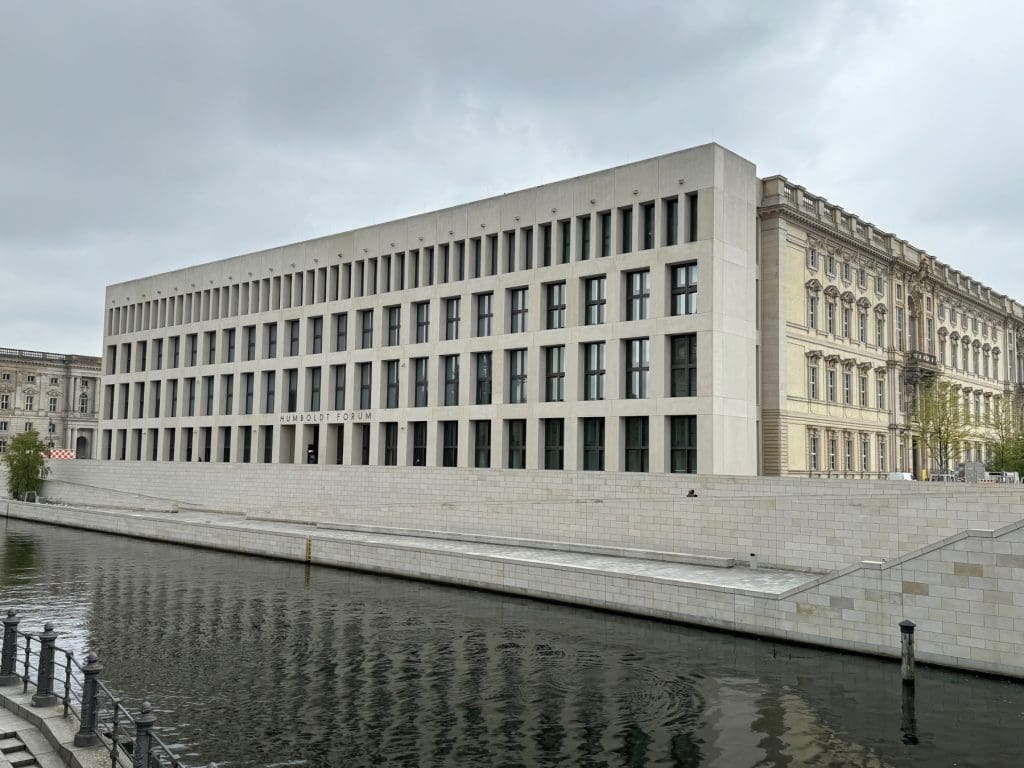
Judging on my visit, Sönke and his team are accomplishing their aims. One exhibition is called Berlin in the 20th Century. In it you have a series of choices to make which reflect your values, at least in my case, accurately. The Humboldt Forum also contains an interesting Ethnology Museum which does not shirk the issues of provenance of historic artefacts from Germany’s colonial past, and a sculpture hall. They arrange theatre, film nights, workshops, open air concerts and conferences. While I was wandering around a radio programme was being aired in front of a large audience. From 17 May, there is an exhibition on the Palace of the Republic.
If the role of culture is to ask questions, then the Humboldt Forum is proving a tremendous success.
UFA Fabric
My visit to the Humboldt Forum was on the second full day of my trip to Berlin. The previous day I had visited UFA Fabric, a non-profit which used to be a film studio prior to the Second World War.
UFA produced Marlene Dietrich’s Blue Angel and Fritz Laing’s Metropolis, widely regarded as two of the finest films of all time.
Unlike the Humboldt Forum, it was in former West Germany. In the 70s the site became derelict, and so a group of squatters peacefully occupied the buildings on 9 June 1979. Now, the site has a school with a free pedagogy and a children’s farm, where children take care of the animals, as well as sustainable co-working spaces with green roofs and solar panels.
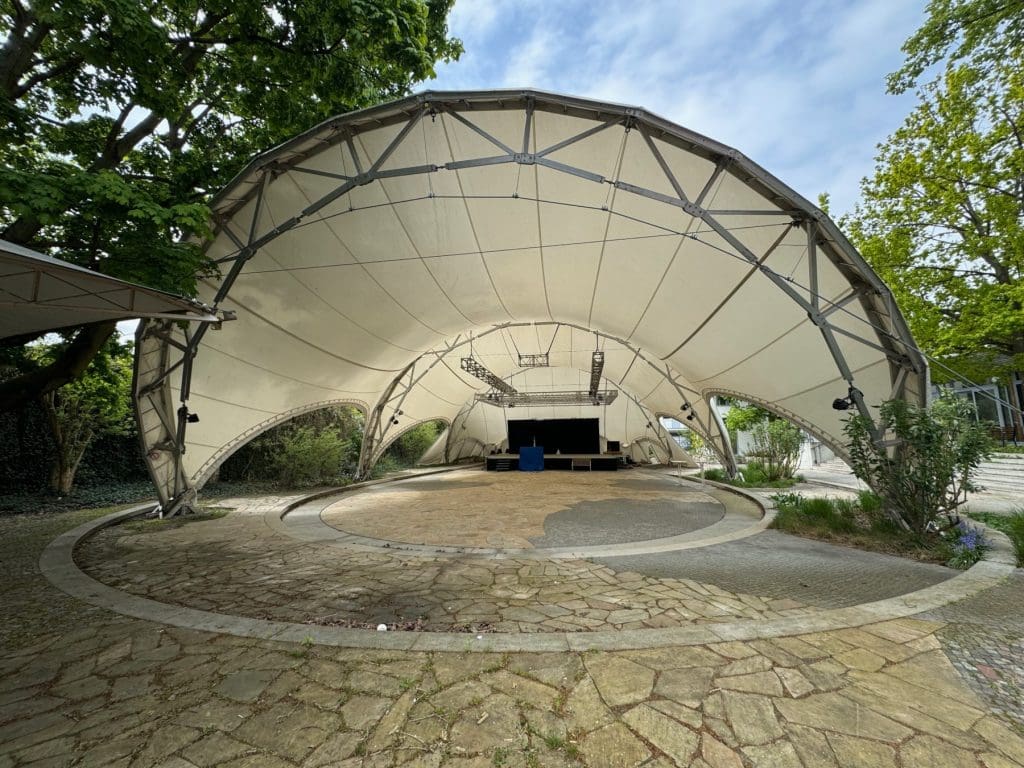
At its heart is the International Culture Centre, which promotes cultural exchanges between nations. My guide Inna Barmashenko, UFA’s marketing manager, explains they have close ties with Taiwan to cite just one example.
Each month they have several performances per week, except January, in their indoor theatre, many of which are in English or non-verbal. They also have a series of outdoor events on their summer stage, which holds 400 people. Many of the performances are free. There is also a small theatre which used to be a screening room – perhaps this is where the rushes of Blue Angel were first viewed.
UFA Fabric is deeply rooted in the community. There is a Neighbourhood Centre which has workshops and courses, as well as jazz and photography schools. Inna is keen to point out that they ensure all performances and tenants align with their philosophy.
The centre also has a cafeteria named Rudi & Rosa after two pigs they had on the farm. It always has at least one vegan / vegetarian option, and on my visit the asparagus risotto was extremely good – although the food did not quite match the excellent plant-based menu of Happa I am to experience that evening, or the food on the Vietnam Food tour I am to go on after my visit to the Humboldt Forum.
Tempelhof
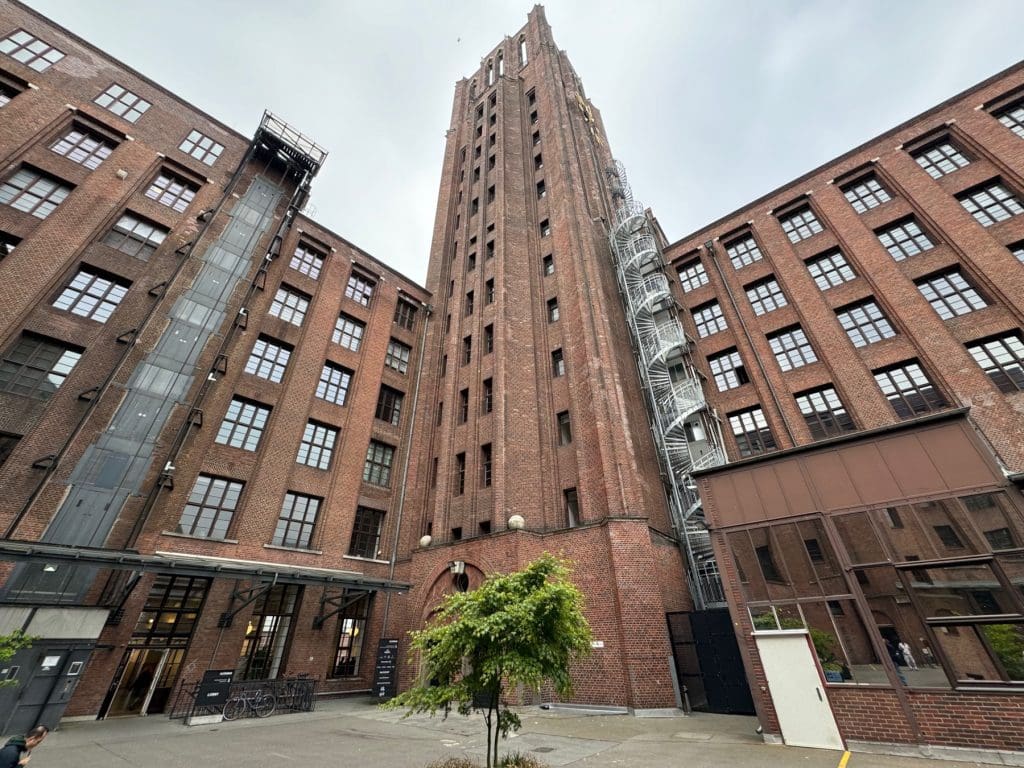
UFA Fabric is just across the road from Ullstein House (Ullstein Druckhaus), an old print work that dominates the area.
It was built in 1927, according to the designs of the architect Eugen Schmolh, the same year as Metropolis was released. Is it too much a flight of fantasy to imagine this building rising from the ground and into Laing’s imagination when he created his master piece of science fiction?
Now the building has too been reinvented, as office space with clients including Lufthansa and Bosch, although there is a small coffee shop on the ground floor and a restaurant, should you wish for an excuse to visit this magnificent temple to industry.
My trip to Ullstein House was an unscheduled pitstop on route to Tempelhof Field which is just a couple of stops away from UFA Fabric on the U-Bahn (U6).
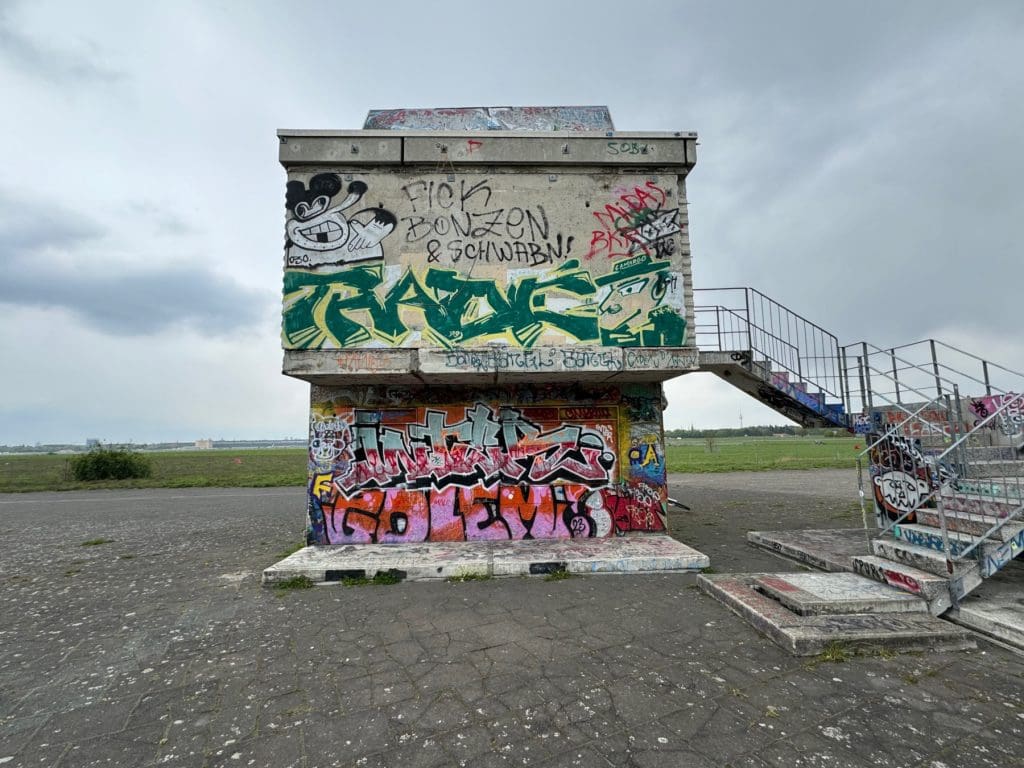
The site of the former airport, the whole area has been turned over to nature and the people. The old terminal building was constructed in 1927. Along with London Croydon and Paris–Le Bourget Airport, it is regarded as one of Europe’s three iconic pre-war airports.
While London Croydon has been redeveloped and Paris–Le Bourget still operates mainly business flights, Tempelhof was closed in 2008, and reopened two years later as Berlin’s largest public park, Tempelhofer Feld (Tempelhof Field). More than 200,000 Berliners use the park each year, mainly riding bikes, skating, walking their dogs or jogging, at least from my casual observation.
There is an area where sheep graze, as well as one where skylarks breed from April to July. In 2013, the Berlin Senate proposed to redevelop the outskirts of the park, but this was rejected in a referendum the following year.
So, Tempelhof Field is left for the community and turned over to nature, the classic example of a reimagined industrial space, or perhaps the icon for the no-fly movement. As I walk around its expansive wasteland, kids are playing, sheep are grazing and one artist is spraying one of the old airport buildings. Is there any better symbol for Berlin, a city that is constantly reinventing itself, pointing the way to create a positive future from our industrial past?
Where to Stay in Berlin?
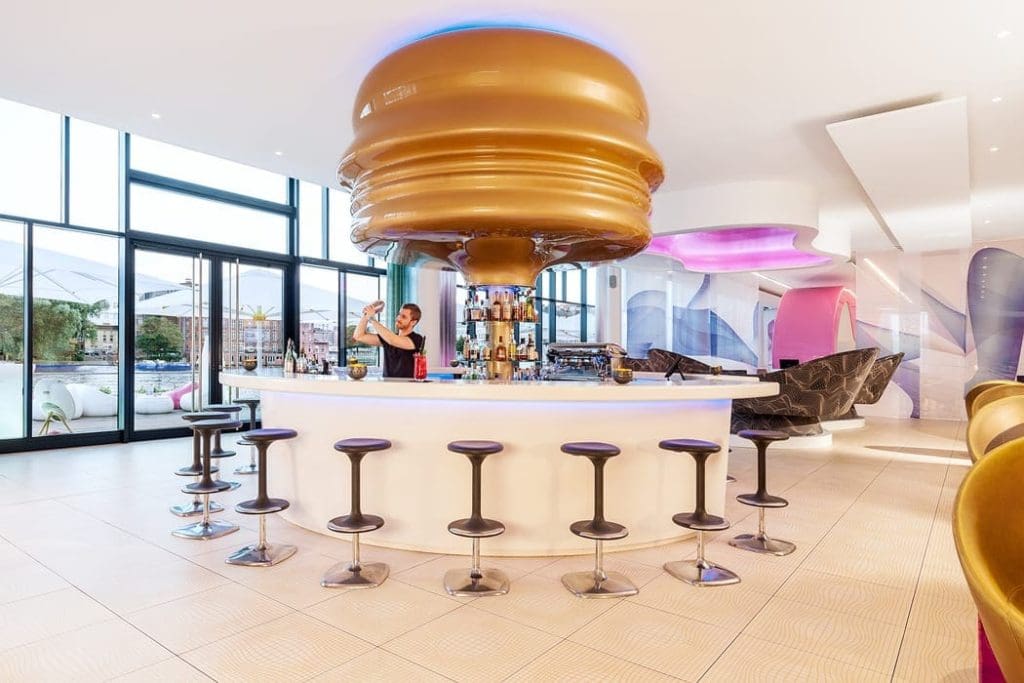
Mark stayed at the NHOW Berlin, which is one of the most unusual hotels, devoted to music, with its own recording studio, and themed music lifts. Standing on the banks of the Spree river, it is perfectly located with magnificent views, spacious rooms, a lively bar with live music and great breakfast. Read Mark’s review of NHOW Berlin.
Humboldt Forum
For more information on the Humboldt Forum go to www.humboldtforum.org.
UFA Fabric
Find details about UFA Fabric here.
Tempelhof Field
Opening hours vary depending upon the season. To find out when Tempelhof Field is open and how to get there, click here.
Things To Do in Berlin
Mark was hosted on his Berlin trip by Visit Berlin, for more inspiration on the many things you can do in Berlin, go to the official travel website of Berlin.
